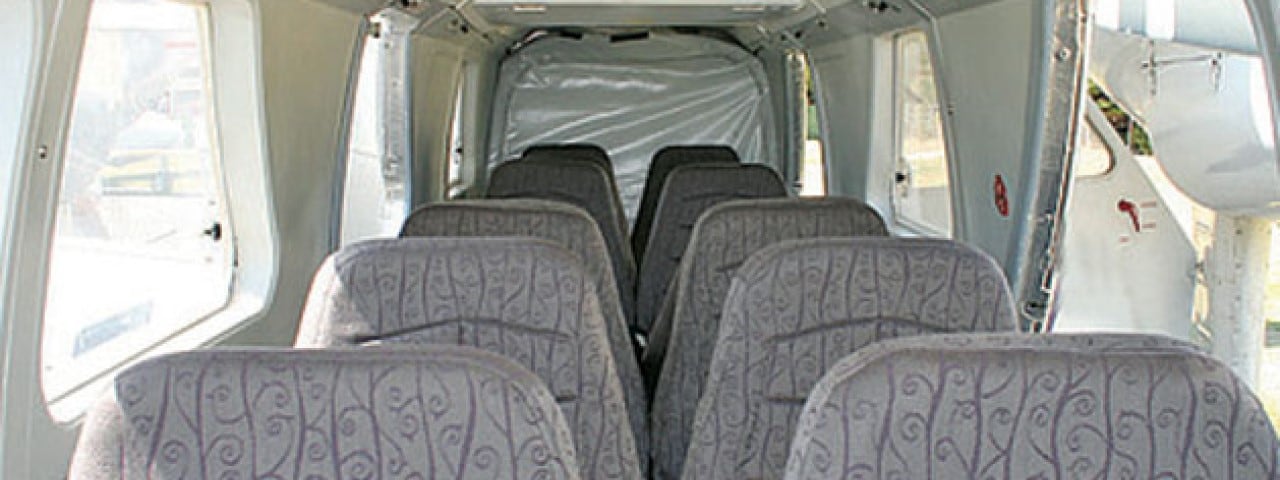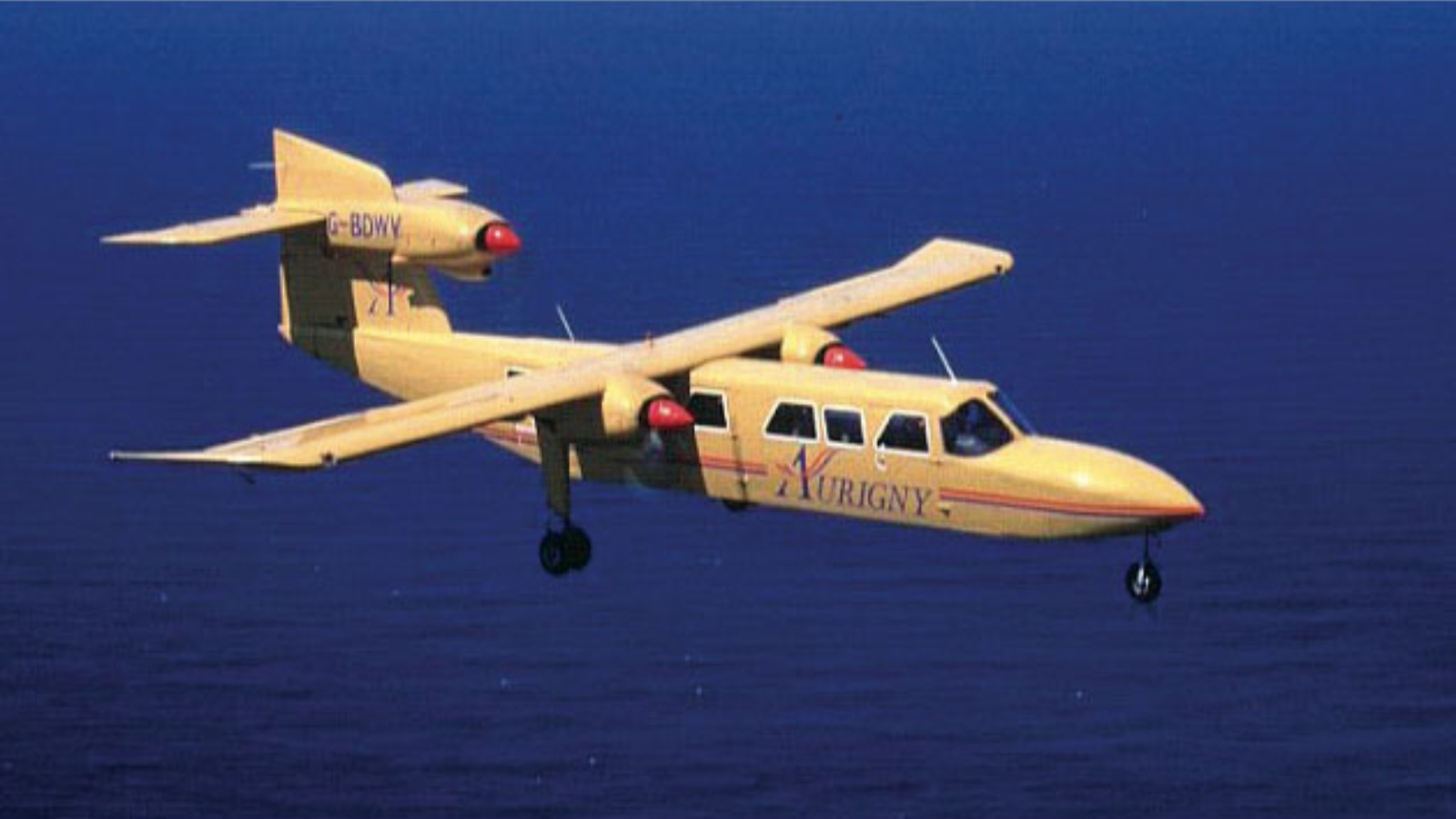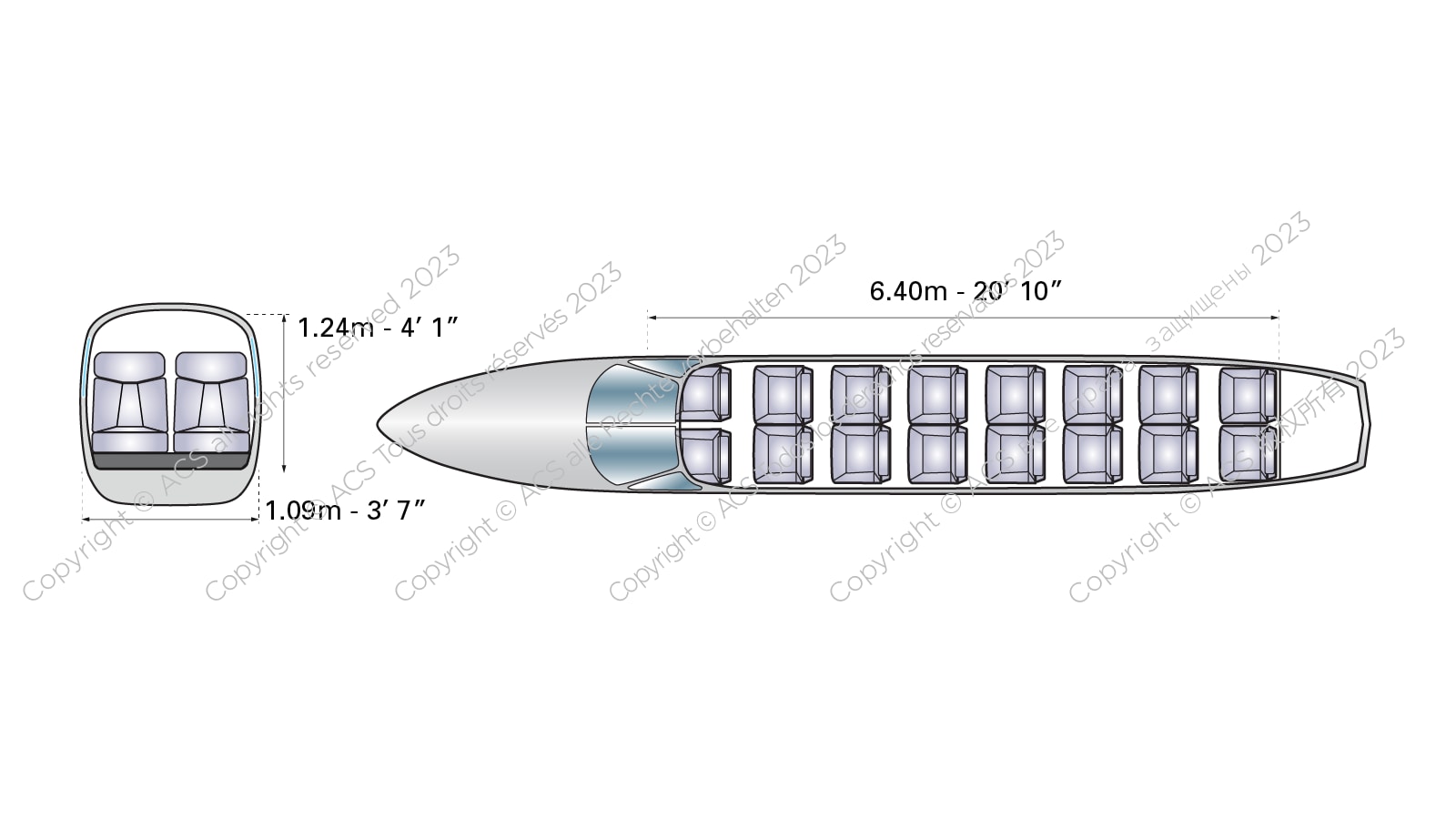BRITTEN-NORMAN BN TRISLANDER
- Passengers 14
Based on the earlier BN-2 Islander, the Britten-Norman Trislander is a three-engined, piston-powered civilian utility aircraft. The main differences from its predecessor are a stretched fuselage, strengthened fixed tricycle landing gear and third engine.
About this aircraft
- The original Britten-Norman Trislander BN-2A MK III-1 first flew in 1970 and entered service in 1971.
- Its cabin is designed to seat up to 16 passengers, but most are fitted with a maximum of 14 seats. This is less if the rear of the cabin is utilised for luggage.
- Purpose-built for short-haul flights, it’s capable of non-stop journeys like London to Brussels or mainland UK to the northernmost Channel Island, Alderney.
- The external and internal baggage space can fit around eight suitcases.
- Production of the aircraft ceased in 1982.
The Britten-Norman Trislander carved a niche for itself by operating high-frequency, short-sector scheduled and charter flights across the globe for over 50 years. Despite winning the Queen’s Award to Industry for technological innovation, it wasn’t as successful as the original BN-2 Islander and very few are available to charter today.
Interior design

The Trislander is the same width as the smaller BN-2 Islander and retained its pioneering wall-to-wall seating arrangement. As there’s no aisle, passenger access is via doors on either side of the fuselage, with three on the starboard side of the cabin and two on the port side. The cabin is rather basic due to the aircraft’s age, but it does feature air-conditioning and a reading light for each passenger.
Below is a typical configuration found on a Britten-Norman Trislander.

Interesting facts to learn before you fly
- The Trislander is one of the world’s smallest three-engined aircraft.
- It can take off from a 492 ft long landing strip and operate from unprepared surfaces.
- The aircraft can be flown by a single pilot.
- The first Trislanders were delivered with a shorter nose than some later variants.
Technological features
The Trislander is powered by three Lycoming O-540-E4C5 piston engines, each producing 260 hp. A standard model typically features analogue cockpit gauges, Garmin GPS and Basic KAP 140 Autopilot.
History
The Britten-Norman Trislander has its roots in the smaller piston-powered BN-2 Islander, which was designed to be lightweight, offer excellent short takeoff and landing performance, and seat up to eight passengers. Launched in 1967, the Islander was a resounding success, but there was demand for an aircraft that could carry more passengers.
Instead of creating a brand-new jet, Britten-Norman unveiled a stretched version of the Islander with more seats. It was named the Trislander as it had a third Avro-Lycoming O-540-E4C5 piston engine on the tail to lift the extra size and weight. Other additions included a 2.3-metre fuselage 'plug' forward of the wing, strengthened rear fuselage to support the heavier tail and engines, and new landing gear units with larger wheels and tires.
The first Trislander was delivered in 1971. The aircraft didn’t hit the heights of its predecessor, but its low-speed handling and impressive short-field performance made it popular for inter-island routes around the world. Production ceased in 1982 and very few Trislanders remain in operation today.
Manufacturer
British aircraft manufacturer Britten-Norman was founded in the mid-1950s by friends John Britten and Nigel Desmond Norman. The engineering graduates started out developing agricultural equipment and modifying light aircraft, before moving into aircraft production with a single-seater called the BN-1 Finibee.
Only one Finibee was ever produced, but it laid the groundwork for the BN-2 Islander, which targeted the commercial sector and focused on payload rather than speed or range. First flying in 1965, the Islander was so popular that it’s still available today.
Following unsuccessful attempts to market new aircraft, Britten-Norman focused on improving the Islander. The BN-2 Trislander launched in 1970 with greater range and capacity, winning the Queen's Award to Industry for technological innovation in 1975.
Today, over 1,300 Britten-Norman aircraft have been built and the company is the UK’s only independent commercial aircraft producer.
Cost
A used Britten-Norman Trislander costs around $150,000 (USD) depending on its age and condition.
Charter rates
Charter rates for the Britten-Norman Trislander vary depending on the length of your journey and the airports you’re flying in and out of.
If you’d like to charter a Britten-Norman Trislander, contact our team for a quote today. For information on other charter options, browse our list of available private aircraft.
Wet lease rates
ACMI (Aircraft, Crew, Maintenance, Insurance) wet lease rates for the Britten-Norman Trislander vary depending on the age of the aircraft, lease term length, number of guaranteed block hours and average cycle ratio. Contact us for a personalised quote.


